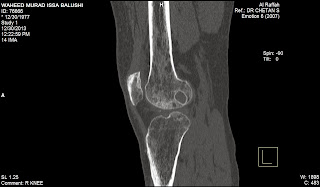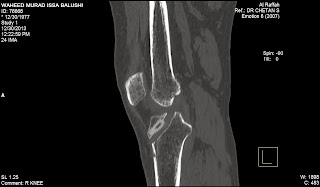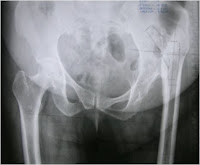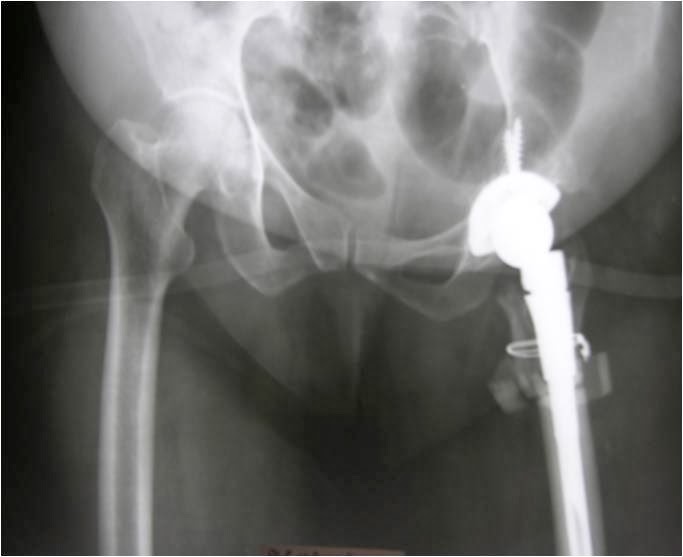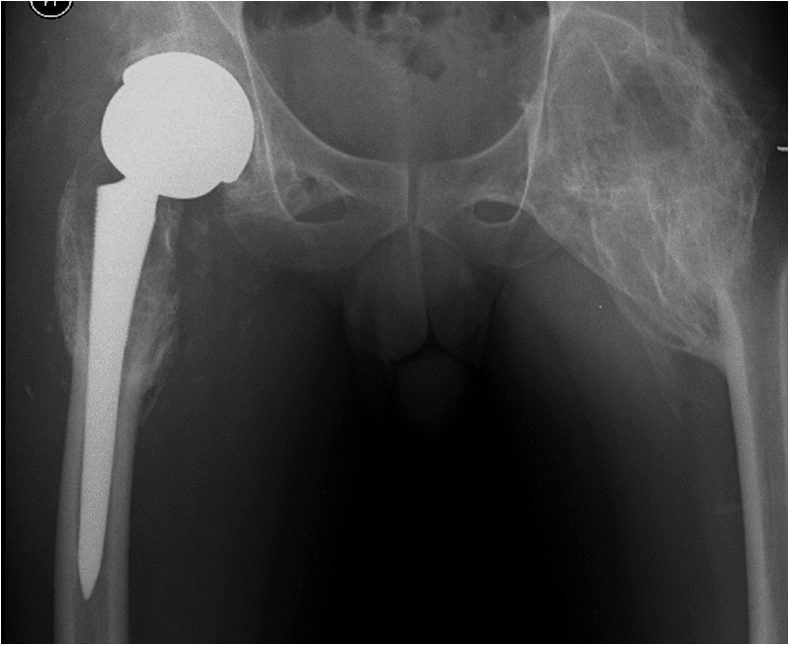He was for 4 months following which was found to have an ankylosis of both hips. recovered neurologically . He was brougth to us for help in mobilising. he had all his hip muscle are ossified . CT angio was done to locate the vessel and revealed the the neurovascular bundle displaced anteriomediallly surrounded by HO.- case done in 2003
Plan.
Largest bearing possible to avoid dislocation .
Any other suggestions
The hip was approached thru a lateral incision and hip joint accessed from both anteriolateral and posteriolateral. neck osteotomised and the largest MOM bearing(xl head) was used with a sleeve for taper correction for the xl metal head. there was severe oozing from the raw bone surface which was thought to be controlled with bone wax.
2nd postop day he developed compartment syndrome of the thigh from the ooze and had to be decompressed.
in view of this at three months when the second hip was replaced we used laser to cauterize the bleeding bone which prevented another compartment syndrome.
3 month later the second hip was replaced and was mobilized on a zimmer frame and then crutches.
xrays at one year showed some HO formation inspite of preop radiation. at this stage he was still walking with a single stick
He returned at 2 years with the pain and the xrays showed this massive cyst with disappearing bone- the dreaded psuedotumour assocoiated wih this particular implant. This entitiy as not described then and we presented the histology of Metallosis and ALVAL
Sadly the patient ended with bilateral girdlestone as they lost trust in hip arthroplasty
